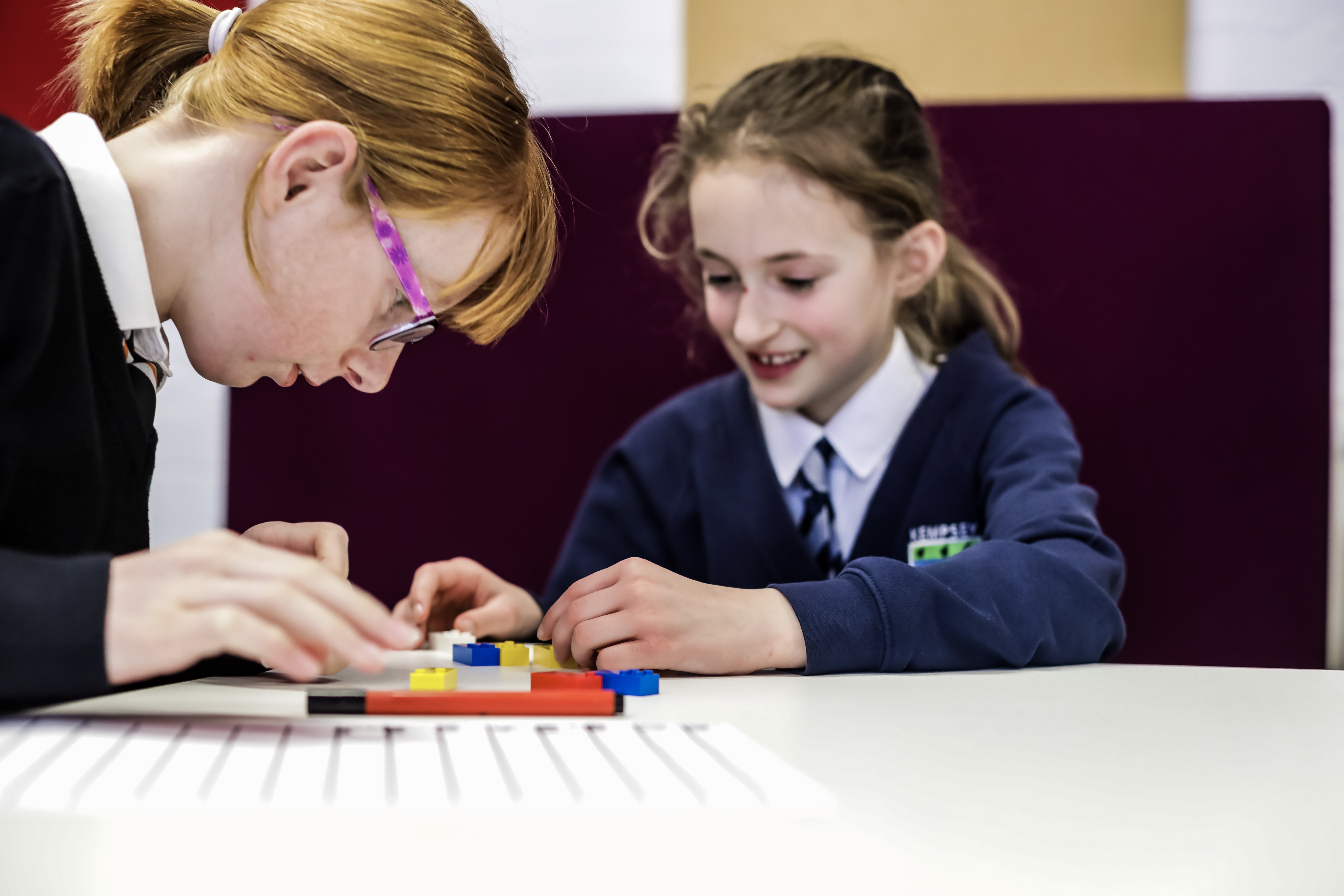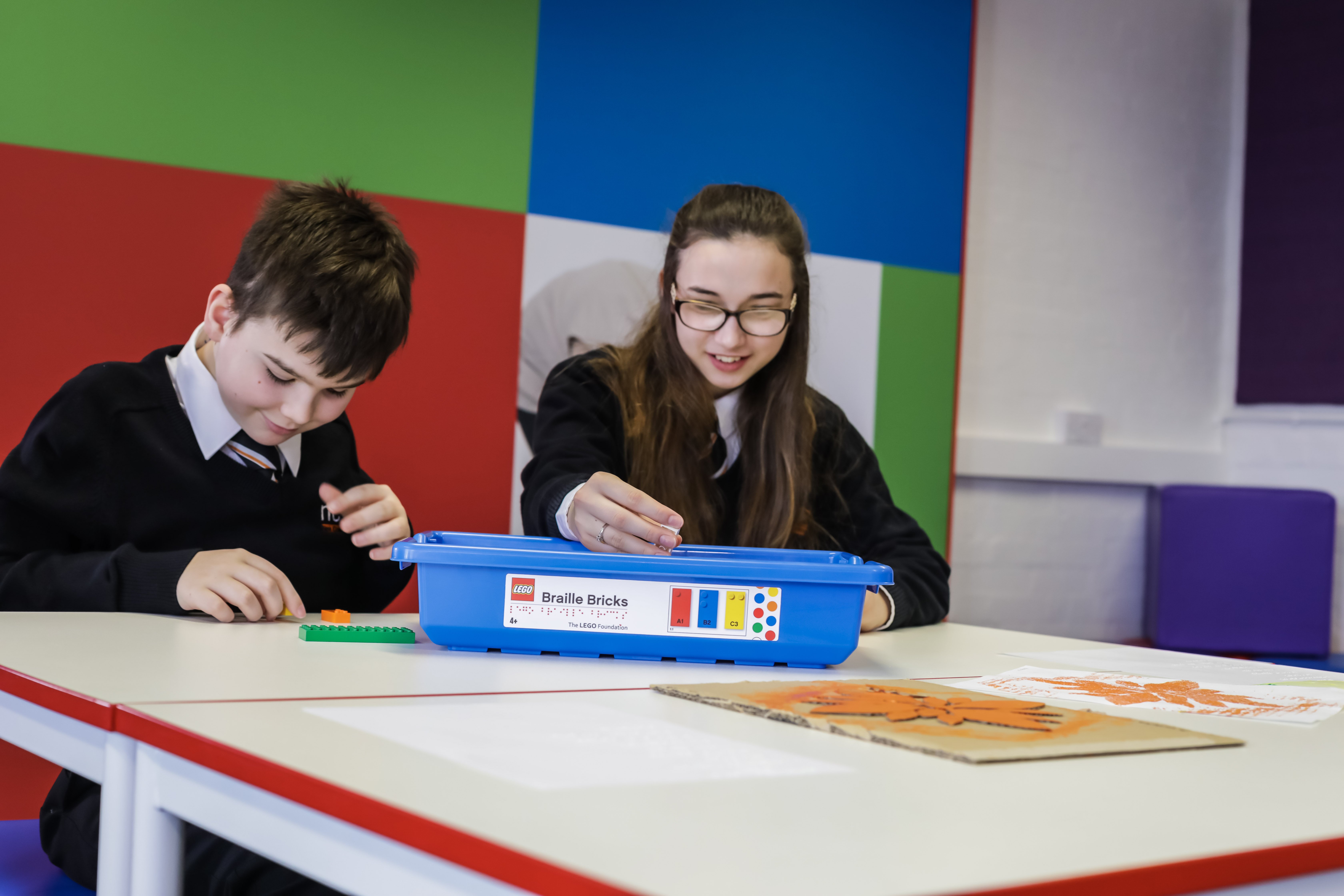Lego is piloting a set of 250 blocks that together cover the entire braille alphabet to help children who are blind or have low vision learn how to read.
The development is a victory for disability rights advocates who have long been calling for efforts to close the literacy gap for children with blindness and low vision. The blocks will be distributed free of charge to partner organizations that can then give sets to learning centers, schools, and daycares.
Although mastery of braille correlates to higher levels of educational attainment and greater career success later in life for children, the reading system has been falling out of favor in recent years as digital learning tools become more popular. In the US for instance, 10% of blind children are learning braille today, compared to 50% in the 1950s.
The new Lego blocks, along with other recent efforts to adopt braille efficiency, could help reverse this trend.
Take Action: What Do You Know About the Inequalities Faced by People Living with Disabilities?
“With thousands of audiobooks and computer programs now available, fewer kids are learning to read braille,” said Philippe Chazal, treasurer of the European Blind Union, which partnered with Lego on the announcement, in a press release. “This is particularly critical when we know that braille users often are more independent, have a higher level of education, and better employment opportunities.
“We strongly believe LEGO Braille Bricks can help boost the level of interest in learning braille, so we’re thrilled that the LEGO Foundation is making it possible to further this concept and bring it to children around the world.”
In addition to the full braille alphabet, the blocks will include the numbers zero through nine and various math symbols to encourage different challenges and learning opportunities. The blocks are fully compatible with other Lego blocks and can therefore be used to supplement a child’s existing Lego set.
The blocks are being tested in Portuguese, Danish, English, and Norwegian, while additional languages will be added in the future.

Read More: This Is the World’s Largest Unaddressed Disability — and It Affects More Than a Third of Us
People with disabilities are often excluded from society in various ways. In an analysis of 37 countries, the United Nations found that children with disability are almost universally less likely to attend school than their peers without disabilities, and that adults with disabilities are far more likely to be illiterate.
Illiteracy further isolates people with disabilities by making it harder to find work, apply for government assistance, navigate the world, shop for basic necessities, and everything else that makes up daily life.
Globally, 1.3 billion people live with some form of vision-related disability. Blind people, in particular, face difficulties that make it more likely for them to live in poverty.

Read More: This Disease Leaves Someone Blind Every 15 Minutes — and Women Are the Most Vulnerable
People with disabilities also often require a range of support services and health care that vary in quality around the world and may not be available at all in some remote or impoverished areas, according to a UNICEF report.
A 2007 study in China found that 40% of people with disabilities received no support for their conditions at all, while a 2006 study in Morocco found that 55% of the population living with disabilities required improved support services, the report notes.
In recent years, disability rights have gained more traction and countries and companies are taking steps to make societies and work cultures more accommodating to people with disabilities.

Read More: First-Ever Street Mural by a Blind Artist Confronts Avoidable Blindness
The new Lego braille set is one small piece in a larger paradigm shift toward disability inclusion.
“Blind and visually impaired children have dreams and aspirations for their future just as sighted children,” said John Goodwin, CEO of the Lego Foundation, in a press release. “They have the same desire and need to explore the world and socialise through play, but often face involuntary isolation as a consequence of exclusion from activities.
“With this project, we are bringing a playful and inclusive approach to learning Braille to children,” he added. “I hope children, parents, caregivers, teachers, and practitioners worldwide will be as excited as we are, and we can’t wait to see the positive impact.”